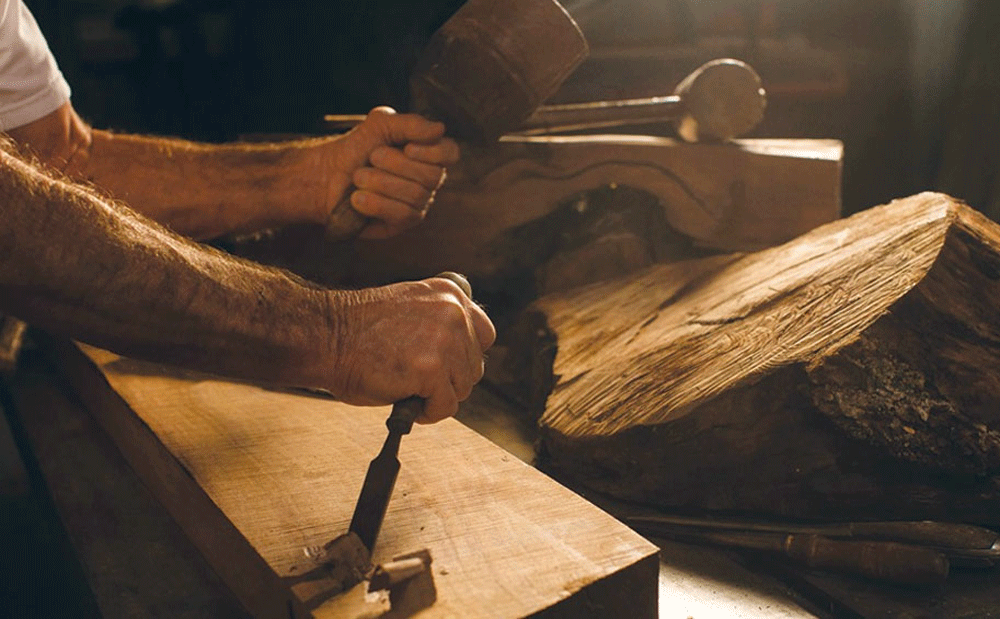
It can be difficult cutting rough lumber and loading it into your car is not easy. When you visit the store, make sure you have your tape measure and hand saw. Additional boards can be purchased in case the one you have bought doesn't fit. You should also ensure that the board has checks and knots. They may not be as easy to plane down as you expected. You don't want to have to rip a board and start all over. It will take time and cost you money. So, it is a good idea to buy a few extra boards.
You save more
A sawmill usually turns 59% of rough lumber into boards when cutting it. The rest of a log is usually waste: sawdust chips, bark and chips. The log should be cut to a smaller size, but not more than 20%. Here's an easy formula to calculate how much wood is left over after a board has been cut. A 4-foot nominal board should be removed by the sawmill to reach the desired lumber thickness.
Rough lumber is not always available in standard dimensions. The dimensions of hardwood that you purchase from a big box retailer are often known. This allows for you to plan your project using the standard size. The rough edges of lumber can be uneven, which leads to wasted material. Additionally, rough-cut lumber often requires a common width which results in a lot wasted lumber. This waste is not recyclable.

Preparation
Measure the length of your material before you start cutting rough lumber. Rough lumber might not arrive flat at the lumber yard. It may not have parallel sides or edges. This may mean that it will take several passes to flatten. It is a good rule of thumb to take out 1/16" per pass. If the lumber has concave edges, you can run it through a saw with the concave side down.
Rough cut lumber should be flattened to a thickness of 1/4 inch before it is cut. After flattening your face, plane the board to the desired thickness. Once you have measured the rough lumber's thickness, measure the finished width & length. Don't forget to consider any imperfections. Make sure to leave at least one-quarter inch of space between each board. Plan your project around the available boards. You will have a difficult time working with rough lumber if it is warped, bent, or twisted.
Cost
There are two types if lumber: rough-sawn lumber and dimensional lumber. Home improvement stores typically carry finished lumber, but less often rough-sawn. Both types are available in lumber yards and local sawmills. The difference between the two types is in the amount of work required to process them. Because it takes less work to make, rough-sawn boards are more affordable. It is also wider and thinner than finished lumber.
Although it's generally more affordable to buy lumber from a lumber yard or mill, standard lengths are less common. Although milling your own lumber is cheaper than buying rough-sawn lumber it can still be an economical option. However, you will need to have enough shop space and more power. Milling equipment is noisy and requires training. Consider the local zoning laws if you intend to use your mill.

Source
There are many options available when you buy lumber. There are many options for sizes, shapes, cut, and finishes. Rough sawn lumber, by example, is unfinished lumber. It has been cut into boards. This type lumber is typically stronger than other types of lumber because it carries more moisture. However, it's also thicker then surfaced timber. These are some of many advantages to rough sawn lumber in your woodworking projects.
First, it is affordable and readily available. Rough lumber can't be treated, and it isn't often sold at hardware stores. However, this type lumber comes with its own pros and cons. It is generally cheaper by volume, but costs more per board foot to transport. Additionally, it takes longer to finish than treated lumber. If you are unsure about how much lumber to purchase, this option might be worth considering. If you plan on using rough sawn lumber for your project, consider purchasing a large quantity of it and a small amount for finishing.
FAQ
Are there any other things I should know regarding woodworking?
Furniture making is a laborious task. It's easy not to appreciate how hard it is. Finding the right wood is the hardest part. There are so many varieties of wood available that choosing one can be difficult.
Another problem is that not all wood has uniform properties. Wooden can split or crack, while some woods may warp. These are important considerations to make before you purchase wood.
What kinds of woods are good for making furniture?
Woods are classified based on their hardness. Softwoods can be pine, fir or cedar. Because they are resistant to rot, softwoods are often used as outdoor furniture. You can find hardwoods like oak, maple, mahogany, teak, and others. They are generally indoors as they don't weather well outside.
How can you calculate woodworking pricing?
When calculating the costs of any project, it is important to keep them as low and affordable as possible. You should always try to make sure that you are getting the best deal on materials. It is important to take into consideration all factors that can impact the cost of your projects. These include time, skill and experience. You can find an estimate of the cost of different woodwork projects in our guide to common DIY tasks.
Do I have to refinish my furniture?
Yes! There are plenty of ways to refinish old pieces of furniture without having to pay a pro. Here are some suggestions:
Use sandpaper on the surface to remove any stains or scratches. Finally, use a clean cloth or sponge to clean the surface.
Apply clear polyurethane paint. Allow furniture to dry completely before you move it around.
Use acrylic paint to paint furniture.
Use stain instead of paint. Furniture will look richer with the stain.
Shellac wax is applied. The wax will add shine to the wood and protect it.
Do you have any suggestions for starting a woodworking shop?
It can be difficult to start a woodworking shop. But if you're passionate about your hobby, you won't mind putting in the effort. You'll likely enjoy the challenge of owning your business.
When you are launching a new venture, it is important to be aware of the possibility that you will encounter unexpected difficulties. Unexpectedly, money might run out. Or maybe you'll find that customers aren't willing to pay as much as you'd hoped. Preparedness is key to survival in such situations.
It is a good idea to create a separate bank account just for your company. This way, you'll always know exactly how much money you have coming in.
Where can I begin with woodworking
Building furniture is the best way to learn how furniture is made. You will need tools. There are bound to be mistakes. But if your persistence is consistent, you will soon master the craft.
You should first choose the project you wish to complete. It could be something as simple as a box or as elaborate as a full-scale entertainment center. Once you've settled on a project find a local skilled woodworker. Ask him or her for advice on what tools you'll need and where to find them. Perhaps you could ask if there is someone else who does this type of work.
Statistics
- Most woodworkers agree that lumber moisture needs to be under 10% for building furniture. (woodandshop.com)
- The best-paid 10 percent make $76,000, while the lowest-paid 10 percent make $34,000. (zippia.com)
- Overall employment of woodworkers is projected to grow 8 percent from 2020 to 2030, about as fast as the average for all occupations. (bls.gov)
- Woodworkers on the lower end of that spectrum, the bottom 10% to be exact, make roughly $24,000 a year, while the top 10% makes $108,000. (zippia.com)
External Links
How To
How do you measure wood accurately?
We have several ways to measure wood. We use a digital scale (a tool for measuring distances), a laser-level (used to level your work surface), as well as a bubble level (used in order to level your work surface).
Two jaws can be opened and closed on a digital caliper. One jaw holds the object being measured and the other measures the distance between them. The digital calculator is ideal for measuring very small distances, like the thicknesses or wood.
Laser levels have an infrared light beam that projects a line across the floor. The laser emits a red dot on the line. You can check if the surface is level by looking down at the line. Large surfaces can be checked for accuracy with laser levels.
Bubble levels look similar to a compass. The device's center bubble is visible. The device will indicate whether the surface is level as long as it is centered. Bubble levels are good for checking the accuracy of smaller areas.